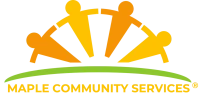Understanding Invisible Disabilities
If you see someone walking with a cane or getting around in a wheelchair, it’s quite apparent that this person is living with an impairment. However, when you consider 1 in 6 people in Australia live with some kind of disability, it’s important to remember that not all disabilities are visible to the naked eye.
An invisible disability is a medical condition or impairment that is not immediately apparent or visible from the outside. An invisible disability can impact various aspects such as physical, cognitive, and sensory functions. They may experience unseen pain, dizziness, or learning differences. Hidden disabilities can lead to judgement and misunderstanding.
There is a lot of work to be done to break down the stigma and discrimination of invisible disabilities. More of society needs to be aware of the concept of invisible disabilities and we all need to raise awareness about the challenges faced by individuals with invisible disabilities. We really have no idea what someone else is dealing with on a daily basis.
What is an invisible disability?
When we talk about invisible illnesses and disabilities we refer to symptoms such as chronic or debilitating pain, chronic fatigue, dizziness, brain injuries, learning difficulties, autoimmune conditions, cognitive dysfunction, and mental health disorders. Although these symptoms are not always visible to others, they can sometimes or always limit a person’s daily activities or social interactions.
It is estimated that 90% of the 4.4 million people living with a disability in Australia are living with a disability that is not visible or outwardly obvious. In this regard, those who live with a visible disability (walking with a cane or in a wheelchair) can also be living with an invisible disability (chronic pain or learning difficulties).
What are examples of an invisible disability?
There are thousands of conditions that could fall under the umbrella of invisible disabilities, each has diverse effects on individuals’ physical, emotional, and social well-being that are not always apparent from the outside. Some invisible disabilities may become more apparent as you get to know someone, however some disabilities may be completely hidden unless you are otherwise informed.
Here are just some examples of invisible disabilities:
- Chronic pain: A person living with conditions such as fibromyalgia, migraines, or chronic back pain may be experiencing pain and discomfort that is not outwardly visible to those around them.
- Mental health disorders: When someone experiences depression, anxiety, post-traumatic stress disorder (PTSD) or Attention deficit hyperactivity disorder (ADHD) it can affect their emotional and mental well-being that may not be noticeable to others.
- Chronic illnesses: Conditions such as heart disease, osteoporosis, or Crohn’s disease can cause continuous health issues without being outwardly visible.
- Autoimmune diseases: Lupus, multiple sclerosis, or rheumatoid arthritis are all conditions that impact a person’s immune system and don’t have immediately apparent symptoms.
- Neurological disorders: Conditions such as epilepsy or vertigo can impact the brain and nervous system while not appearing visible on the outside.
- Learning disabilities: Dyslexia and autism are common disabilities that affect many people and you could never even know it.
- Chronic fatigue syndrome: Some people experience consistent fatigue that isn’t cured by sleep.
- Sensory processing disorders: Conditions that affect the way the brain interprets sensory information can cause someone to be hypersensitive to noise or touch.
How do invisible disabilities impact individuals’ daily lives?
A person is considered to have a disability if they have at least 1 of a variety of limitations, restrictions, or impairments that lasts for at least 6 months and restricts everyday activities.
These limitations fall into 10 grouped activities associated with daily living:
- Self-care
- Mobility
- Communication
- Cognitive or emotional tasks
- Health care
- Reading or writing tasks
- Transport
- Household chores
- Property maintenance
- Meal preparation
How do invisible disabilities differ from physical disabilities?
From the perspective of someone looking in, it’s easier to understand that someone is dealing with an impairment if we see them using some kind of assistive device or if they look different to us. We often allow them more patience and understanding in certain situations.
Considering most people living with disabilities live with the invisible kind, a societal shift and a willingness to change our own biases is required. It’s easier to dismiss the effects of a medical condition when it is not visible to the naked eye so it’s important for us all to widen our understanding of disability and remain open-minded when interacting with others.
What challenges face those with invisible disabilities?
Many challenges faced by individuals with invisible disabilities, including the misconceptions and stigmas are encountered in various aspects of daily life.
Hidden disabilities have the advantage and the disadvantage of secrecy. This leads us to the stigma that surrounds invisible disabilities that people face on the daily. Many people living with hidden disabilities often have to deal with critical judgement and discrimination due to a lack of understanding.
A lot of people choose to keep their differences or challenges to themselves to avoid being accused of exaggerating it, imagining it or even faking it. Even when you have a diagnosis, without outward “proof” of a disability, it makes it difficult to avoid assumptions of being a hypochondriac or lazy.
Unfortunately, this is a double-edged sword that perpetuates the invisibility and stigma. Without talking about these hidden disabilities in the mainstream, they stay just that, hidden.
Reducing stigma surrounding invisible disabilities requires a collective effort. Here are some things we can do to foster understanding:
- Education and awareness – We can use campaigns, factual information, media outreach and workshops to promote awareness.
- Share personal stories – Encouraging people with disabilities to share their stories helps to break down stereotypes and humanise the challenges they face.
- Inclusive language and practices – We can promote inclusivity and accessibility in all aspects of life, especially education, employment and public spaces.
- Media representation – We can encourage accurate and positive representation of people living with invisible disabilities in the entertainment industry to help to break down stereotypes.
- Legislation and policy – Advocate for legislation and policy that protect the rights of those living with hidden disabilities and promote inclusivity and accessibility.
Reach out to Maple Community Services for more information and support around invisible disabilities.




